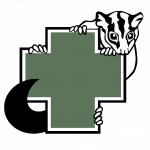A response to outbreaks of H7 high pathogenicity avian influenza (HPAI) is currently underway on 8 Victorian poultry farms, 2 in New South Wales and one in the ACT. The NSW Department of Primary Industries is currently responding to 2 outbreaks of H7N8 in poultry in the Hawkesbury district. The first was an egg farm confirmed on 19 June, and then on 22 June a broiler (chicken meat) farm located within the existing Restricted Area, was confirmed with the same strain.
What is HPAI?
High pathogenicity avian influenza (HPAI) is one of many types of influenza A viruses. The strains are termed “low” or “high” pathogenicity depending on the severity of the disease caused in poultry. Around the world, and in Australia, low pathogenicity avian influenza (LPAI) occurs commonly in wild birds, mostly waterfowl (ducks, geese and swans). Occasionally LPAI can spill over into commercial poultry flocks and evolve into HPAI (known as the H7 strain). It seems this is what has occurred in the Hawkesbury outbreak. There’s no evidence as yet that the HPAI strain evolved in poultry in the Hawkesbury (or in the separate Victorian incident) has spread to wild birds. It is, however a possibility and is the reason for the exclusion zone and other emergency measures in place in that area.
A separate, unrelated strain of HPAI (the H5 variant) is circulating in wild birds globally with the notable exception of Australia and Oceania. If H5 avian influenza gets into Australia it’s not just devastating for poultry, but it will be devastating for our native bird populations. This strain has been detected in wild birds, captive birds, mammals and raptors that eat birds, and the occasional human. This strain IS NOT YET in Australia, but is causing significant outbreaks in the Americas, Asia and Europe.
What are the symptoms?
Symptoms of HPAI in birds are mainly neurological (lack of balance, strange head posture, lack of coordination, inability to stand or fly), also respiratory (difficulty breathing, coughing, sneezing), gastrointestinal (diarrhoea, change in feeding habits), swelling around the head, neck or eyes, cloudiness in eyes or change of eye colour, sudden death.
How is it spread?
HPAI is spread via direct contact with an infected bird’s respiratory aerosols, secretions and faecal matter as well as exposure to contaminated water, clothing, boots, food or food containers. HPAI does not normally infect humans, however some strains have evolved in the past to cause symptoms ranging from mild illness to something more serious.
What is Hunter Wildlife Rescue doing about it?
The team at Hunter Wildlife Rescue is currently preparing for any potential outbreaks of H5 (and on alert for H7) in the Hunter region. We’re pulling together guidelines, staying informed of any updates by the relevant authorities and sharing this with our team of volunteer wildlife rescuers, transporters and carers. Emergency Response Plans are being developed with the help of NPWS, NSW Wildlife Council and other authorities.
What should I do?
The recommendations are to “be alert, but not alarmed”
If you suspect a bird of being symptomatic, contact one of us IMMEDIATELY on our 24/7 Rescue Line before further contact with the bird
Increase basic hygiene – the virus is killed by normal practices. If you care for domestic or rescue birds, please ensure all food, cages, baskets, containers and bedding are not shared, and are washed in a good detergent, dried in the sun, and surfaces disinfected with a hospital grade product. Be vigilant with hand washing, and consider gloves, masks and eye wear if you are immuno-compromised.
Ensure you are up to date with the seasonal flu vaccination
Reconsider the use of whole poultry as food items for animals in care as the virus is not destroyed by freezing
Reconsider any entry to a poultry farm or entry within 100m of large flocks of poultry

